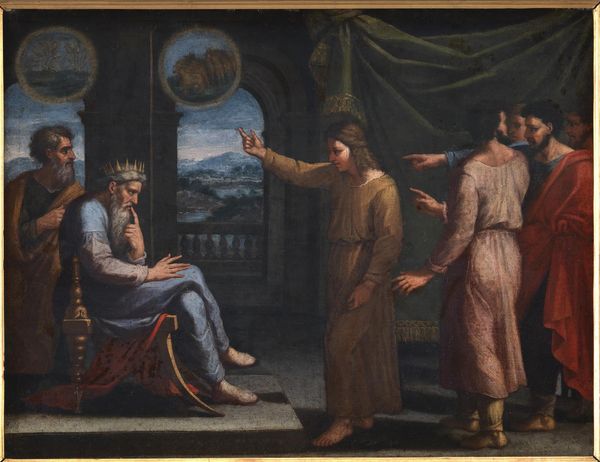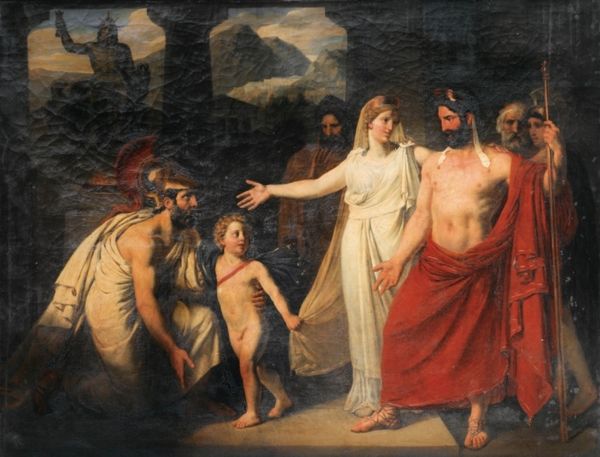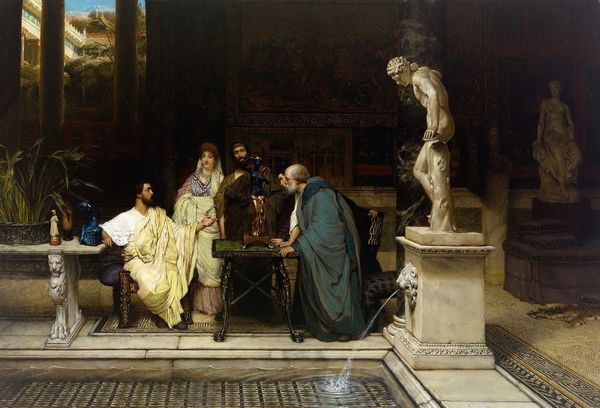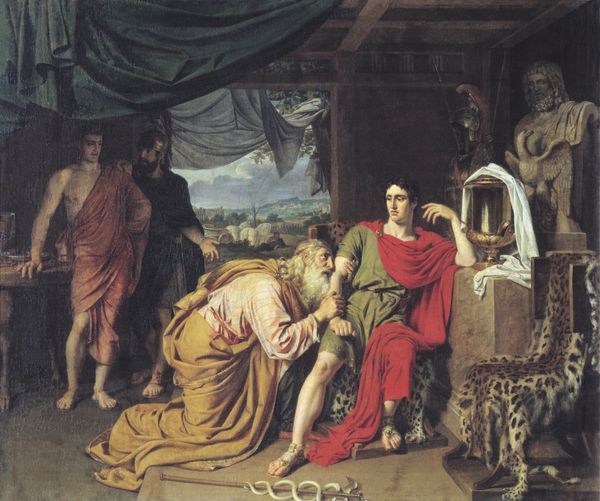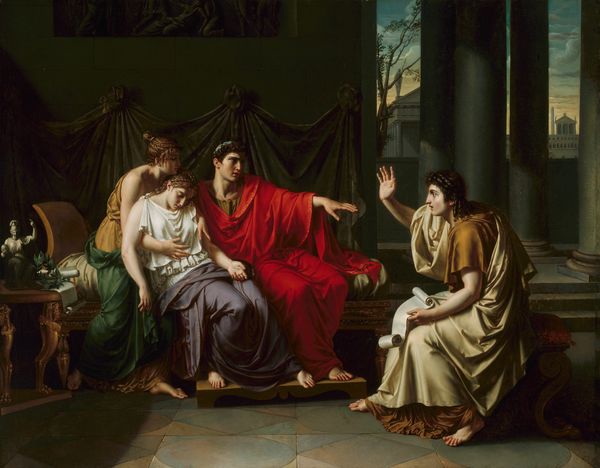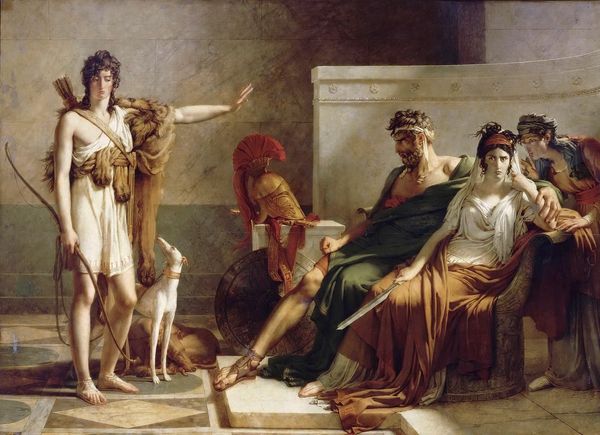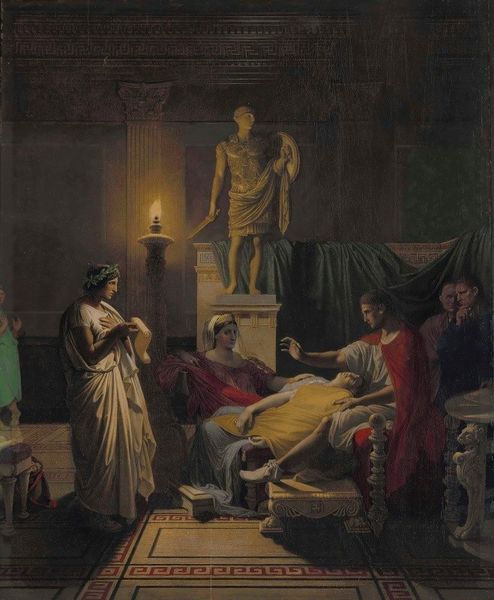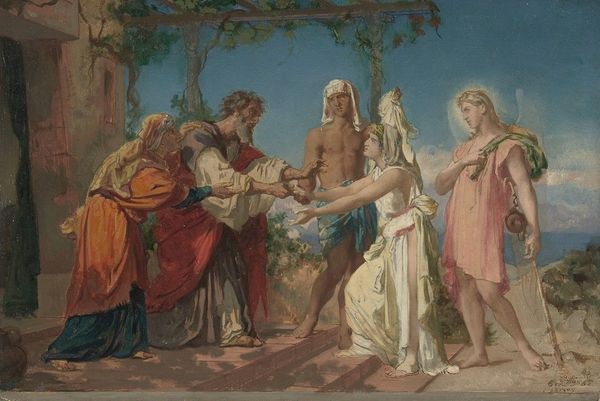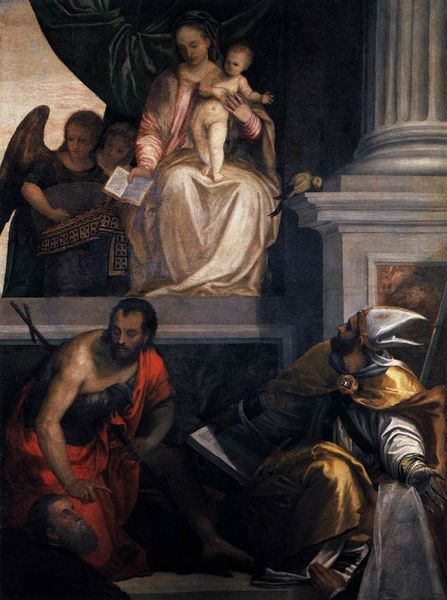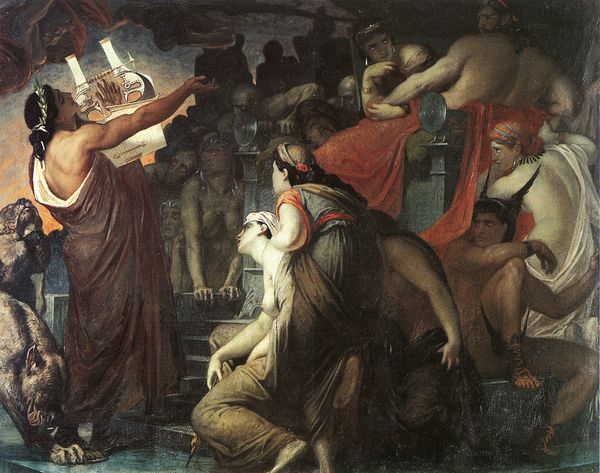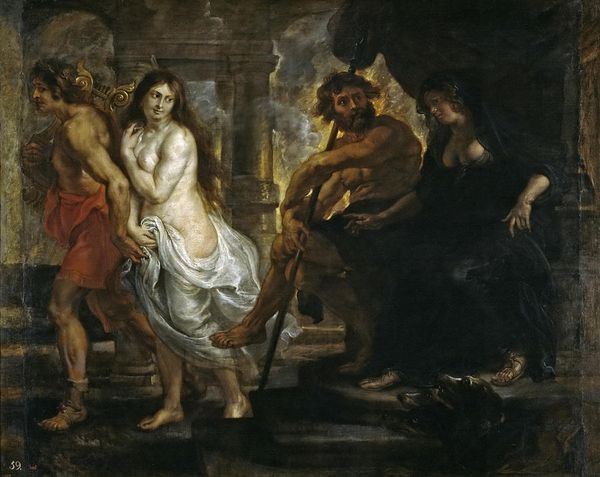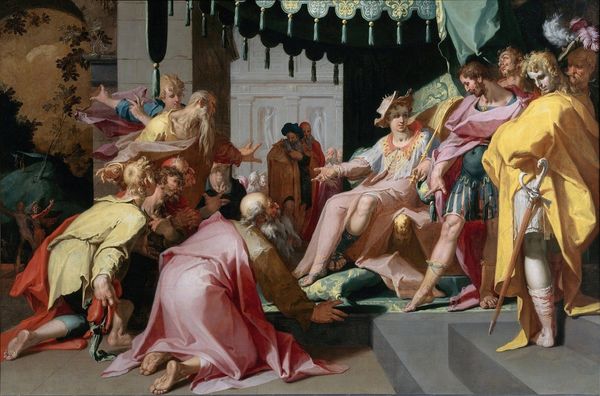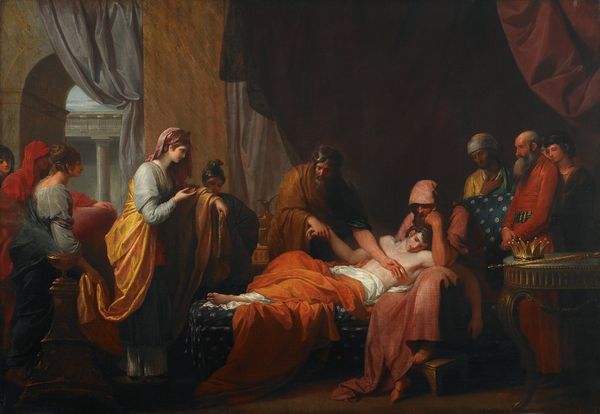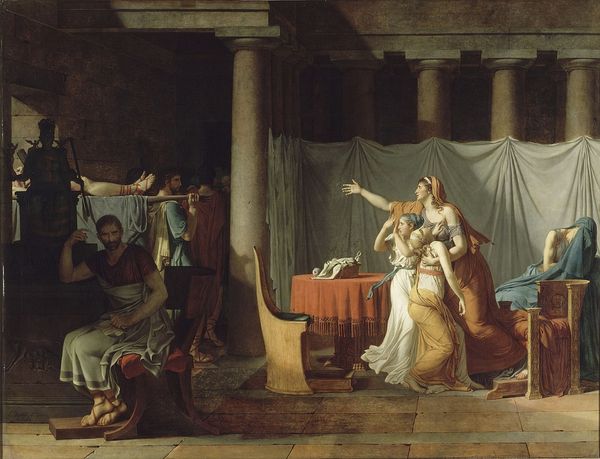
Copyright: Public Domain: Artvee
Editor: Anselm Feuerbach’s "The Symposium," painted between 1871 and 1874, is quite an eyeful! It depicts a classical scene with figures draped in robes, but there’s something almost unsettling about the juxtaposition of bacchanalian revelry and stoic contemplation. What kind of symbolic narrative do you think Feuerbach is weaving here? Curator: A "Symposium" of course speaks of gathering, of sharing, of knowledge, but I think that it also holds within it more elemental, vital currents, rendered here through a decidedly Romantic lens. How do you see the visual space divided? Is there a sense of balance, or intentional imbalance? Editor: Well, to my eye, the painting's divided almost like two different worlds, you have the wild abandon on the left and this somber discussion on the right. It feels imbalanced in terms of energy. Curator: Precisely! The revelry teems with symbols of Dionysus – wreaths, exposed flesh, a blurring of boundaries. Dionysus represents ecstasy, emotional release, the shattering of social norms. His presence destabilizes reason. Do you think that he intended for a rational meeting to occur? Editor: No, absolutely not. It’s like two magnets repelling each other. So Feuerbach is purposefully showing this tension? Curator: Yes, there’s a fascinating dialectic here. The garlanded figures might embody the ephemeral beauty the poet strives to capture, whilst also echoing historical cycles: youthful beauty eventually fading. We are left contemplating an eternal struggle, a vital duality ever-present and unresolved, like a collective cultural memory. Editor: That is quite a powerful way to see the work as memory. It certainly changes my perspective on the scene's composition! Curator: Mine too! Discovering multiple interpretations certainly shows us why we continually find artwork thought provoking!
Comments
No comments
Be the first to comment and join the conversation on the ultimate creative platform.
